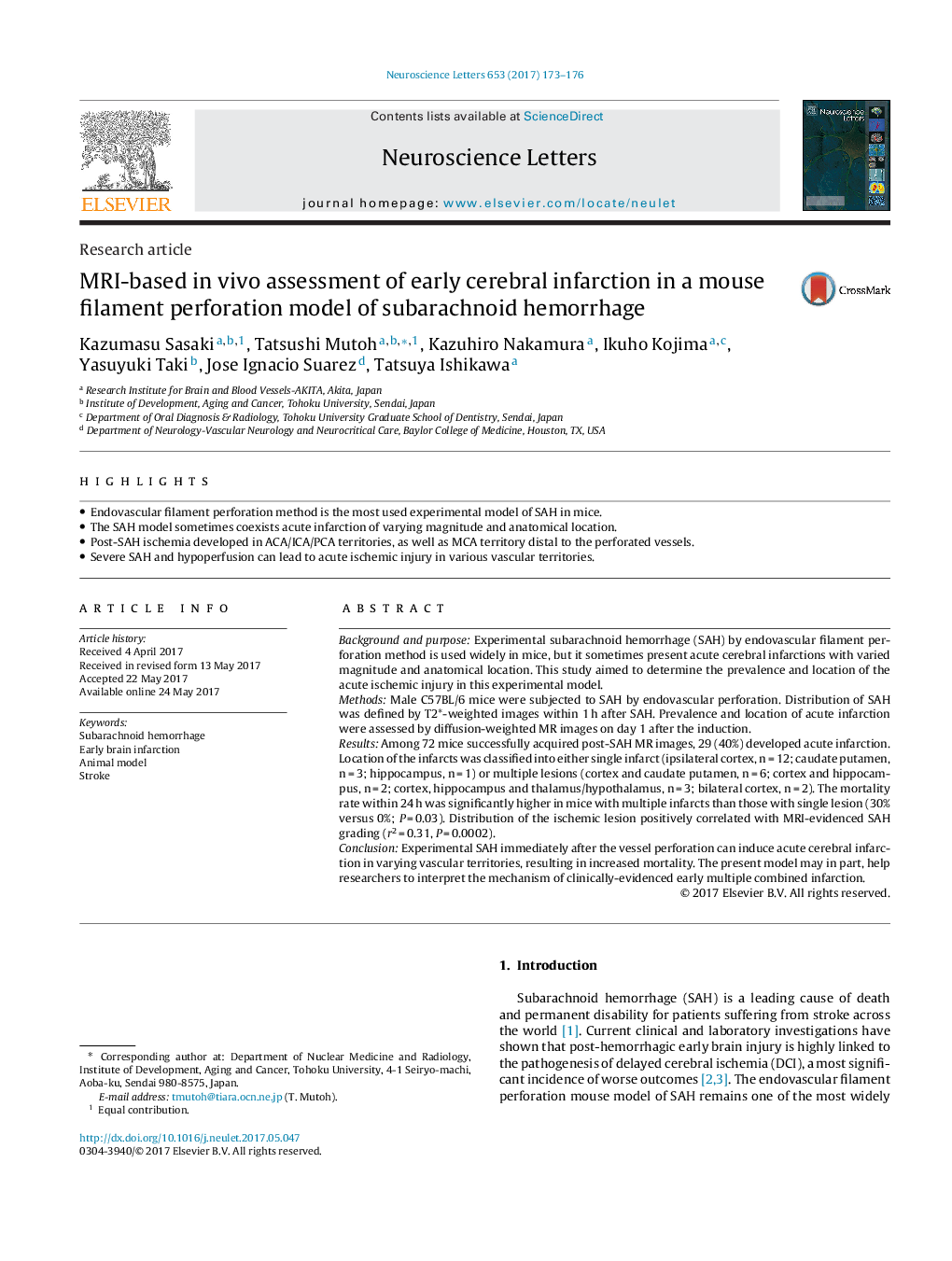| Article ID | Journal | Published Year | Pages | File Type |
|---|---|---|---|---|
| 5738126 | Neuroscience Letters | 2017 | 4 Pages |
â¢Endovascular filament perforation method is the most used experimental model of SAH in mice.â¢The SAH model sometimes coexists acute infarction of varying magnitude and anatomical location.â¢Post-SAH ischemia developed in ACA/ICA/PCA territories, as well as MCA territory distal to the perforated vessels.â¢Severe SAH and hypoperfusion can lead to acute ischemic injury in various vascular territories.
Background and purposeExperimental subarachnoid hemorrhage (SAH) by endovascular filament perforation method is used widely in mice, but it sometimes present acute cerebral infarctions with varied magnitude and anatomical location. This study aimed to determine the prevalence and location of the acute ischemic injury in this experimental model.MethodsMale C57BL/6 mice were subjected to SAH by endovascular perforation. Distribution of SAH was defined by T2*-weighted images within 1 h after SAH. Prevalence and location of acute infarction were assessed by diffusion-weighted MR images on day 1 after the induction.ResultsAmong 72 mice successfully acquired post-SAH MR images, 29 (40%) developed acute infarction. Location of the infarcts was classified into either single infarct (ipsilateral cortex, n = 12; caudate putamen, n = 3; hippocampus, n = 1) or multiple lesions (cortex and caudate putamen, n = 6; cortex and hippocampus, n = 2; cortex, hippocampus and thalamus/hypothalamus, n = 3; bilateral cortex, n = 2). The mortality rate within 24 h was significantly higher in mice with multiple infarcts than those with single lesion (30% versus 0%; P = 0.03). Distribution of the ischemic lesion positively correlated with MRI-evidenced SAH grading (r2 = 0.31, P = 0.0002).ConclusionExperimental SAH immediately after the vessel perforation can induce acute cerebral infarction in varying vascular territories, resulting in increased mortality. The present model may in part, help researchers to interpret the mechanism of clinically-evidenced early multiple combined infarction.
